Home Solar Batteries: A Comprehensive Guide to Energy Storage
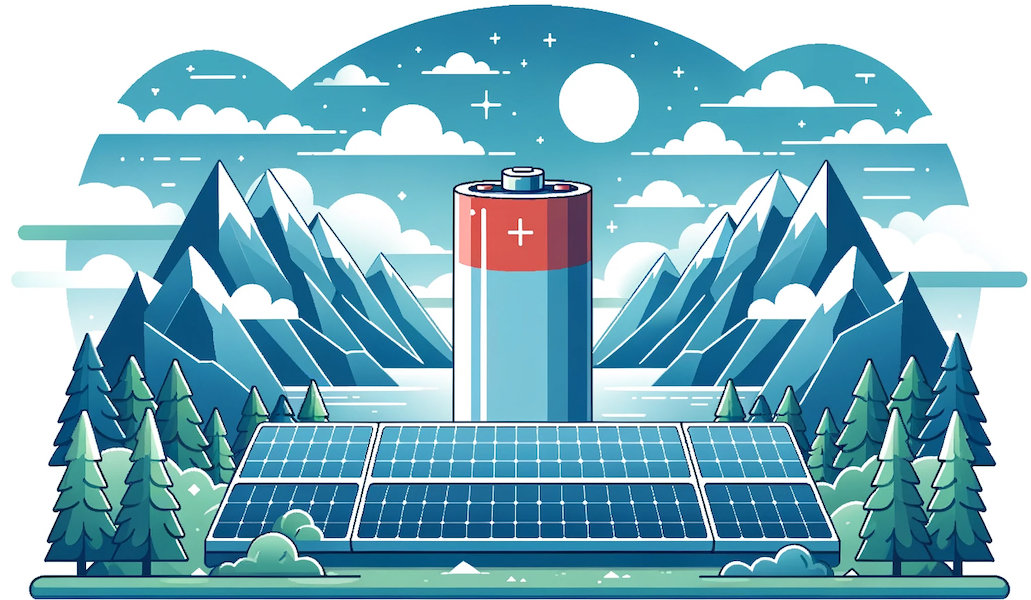
In This Article:
Why do We Need a Battery With Solar Panels?
Batteries that store energy from solar panels significantly enhance the utilisation of domestic solar energy systems. They address the primary limitation of solar energy: its inaccessibility after sunset. Additionally, stored energy can be released on demand, thus covering peak consumption during the day, when solar power is not enough on its own.
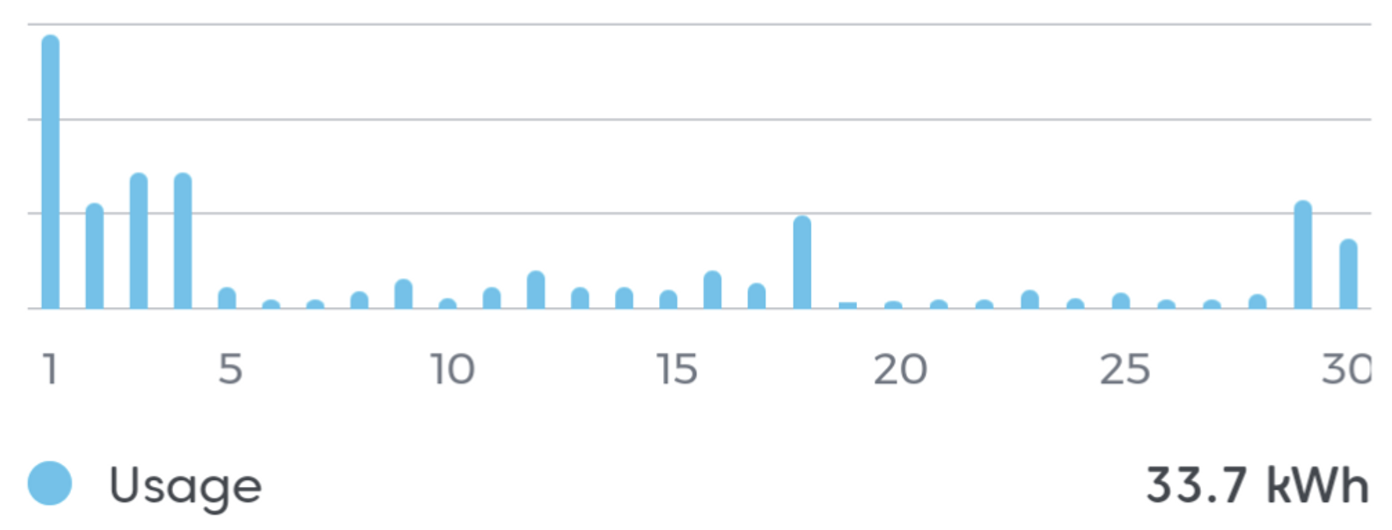
In the graph above we can see that for a home solar energy system, adding a battery significantly improves the utilisation of energy. Counterintuitively, a big role in keeping purchases next to zero was being able to supplement daily peaks with energy from the batteries. For example, when the solar PV arrays produce a steady 1.2kWh and I use the oven, which needs 2kWh, instead of buying 0.8kWh from the grid, I can get them from the battery.
Store Excess Sunlight Energy for Later
Batteries work with your inverter and solar panels throughout the day to store and release energy. They serve as an excellent source of backup capacity during periods of high energy consumption.
Enhance the Capabilities of a Smaller Solar Energy System
Depending on your solar energy system’s generation capacity, sunlight conditions and your home’s energy demand, you may not always have sufficient power from your solar panels to meet the needs of your home. In such instances, the inverter draws power from the battery, supplementing the electricity generated by the solar panels. Once the spike in energy demand subsides and your solar panels generate excess energy, this surplus energy is stored back in the battery, ready for the next spike or for use during the darker hours of the day and night. This means adding a battery can make up for a smaller installed capacity.
Perfect for Zero Export Homes
Batteries serve as a constant load, helping your inverter make the most during strong energy production hours.
Initially I did not have a contract for exporting energy to my utility company, in this case the inverter only produces electricity when there’s demand from the home.
This approach meant that if a cloud happens to be blocking the sun when I need electricity, I cannot rely on the solar panels.
At the same time, if the conditions for generating electricity are optimal, but there is no consumption then the potential remains unutilised.
Type of Batteries
The batteries you can choose for your home solar system generally fall in one of two bigger categories: AC and DC.
AC Batteries for Solar Energy Storage
This is a slightly misleading term. When it comes to storage and release of energy, all batteries release DC. The main difference is that AC batteries include built-in BMS and an inverter. Most AC batteries are designed to serve as a backup power source in case of power outages. Detecting loss of supply from the grid, they seamlessly switch over to become the home’s power source. A popular example of an AC battery is Tesla’s Powerwall. These batteries tend to be more costly at a price per kWh storage.
DC Batteries for Solar Energy Storage
This is the more widely adopted solution because of the versatile and cost-effective options. These batteries require external BMS and an inverter to supply your home. However, this makes them adaptable to a variety of cases.
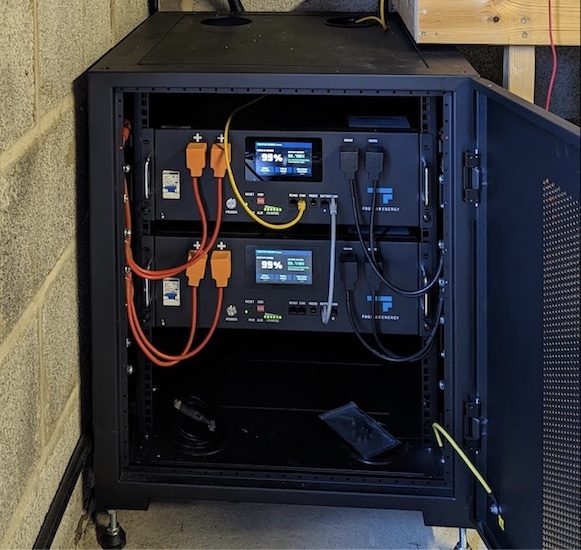
LiFePO4 (Lithium Iron Phosphate): A lithium-ion battery that uses iron phosphate as cathode material. They are known for their long cycle life, safety, and thermal and chemical stability . They do not provide as much energy density as other lithium-ion batteries but are popular for their safety features. Additional details . They are cost-effective and widely available. My system uses LiFePO4 batteries.
Other DC Batteries
Lead Acid: These are traditional, reliable, lower-cost batteries in many off-grid solar systems. They come in two types: flooded (FLA) and sealed (SLA). FLA batteries have a longer lifespan and are more durable but require regular maintenance.
Nickel-Cadmium (NiCd): These batteries are durable and can withstand extreme temperatures but are more expensive and less environmentally friendly.
Nickel-Metal Hydride (NiMH): These batteries have a high energy density and can be more efficient but tend to be more expensive.
Each of these battery types has its advantages and disadvantages, and the best choice depends on your solar energy system’s specific needs and circumstances.
Can a Battery Power Your Home?
Yes, the right battery configuration can power your home. A couple of parameters can determine this:
- What is your home’s total daily electricity consumption?
- What is the peak power requirement of your home?
The battery’s capacity relates to the total consumption, whereas the peak consumption needs to be matched by the battery’s rated power.
Battery Capacity
As mentioned above, the battery capacity needs to be large enough to accommodate for your daily usage. To clarify, you need at least 20% more than your daily usage, because discharging below 20% State Of Charge (SOC) hinders your battery’s longevity. So if your expected daily consumption is 10kWh, your battery capacity needs to be at least 12kWh.
The required daily amount of electricity is predictable within some variation. For example, my home consumes between 6 and 16kWh a day, depending on cooking, washing clothes or dishes, heating water etc.
Why daily and not only nightly, wouldn’t the solar panels cover the day? It is because during the low months from November to February you will be well served if you can leverage a flexible tariff with your battery. Additionally, you can apply the same strategy when bad weather affects your solar PV production during the rest of the year.
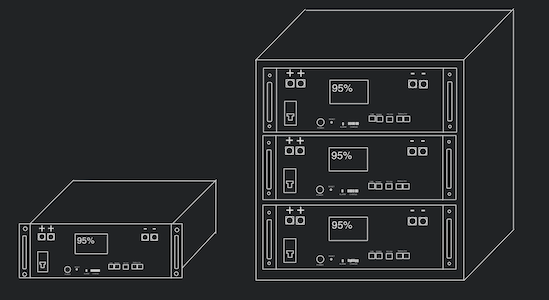
Peak Power Consumption
There are three aspects here, the peak power consumption of your home, the rated power of discharge of the battery and the rated power of the inverter.
The peak consumption can be determined by examining the electricity usage patterns in your home and what appliances are involved. For example, if you cook and wash clothes at the same time, after coming home from work, you should sum the rated power of your hob or oven and the washing machine. For example, my oven is rated at 2kW, and my washing machine is rated at 1kW. If I run both simultaneously, my home will require at least 3kW. A base load should be added to this, too. The base load of your home comes from items such as fridges, chargers, fans etc. which consume a small but constant amount throughout the day.
The inverter’s AC output must match the peak power consumption. This means that if you expect your house to peak at around 3.5kW, then you nee an inverter at least 3.5kW or larger. Preferably, 5kW at least, as it allows for future variations in your peak consumption. This is important as having cost-effective energy from your solar system, you will not optimise for energy efficiency like before when selecting electrical appliances.
So how do you find the right battery with the right parameters for your home? Read on; we will dive into building your energy storage by connecting batteries to meet your requirement.
Charging and Discharging of Batteries
Batteries are charged using DC electricity. This usually comes from the inverter or a charge controller and the source of energy for it is either solar panels or AC from the grid. Charging the batteries is not a simple process and for its seamless implementation the inverter relies on a Battery Management System (BMS) in the battery.
What is a Battery Management System (BMS)?
A BMS is a hardware and software system that manages a rechargeable battery (cell or battery pack) by protecting it from operating outside its Safe Operating Area (SOA).
The BMS ensures optimal, safe, and efficient operation of your battery pack, prolonging its life and performance by taking care of the following.
- Voltage Monitoring: Each battery cell has a voltage range within which it operates efficiently. A BMS constantly monitors this. If one cell is at 4.2V and another at 3.7V, the BMS redistributes the charge to balance them, perhaps slowing the charge rate to the higher-voltage cell while letting the lower-voltage cell catch up.
- Temperature Control: Extreme temperatures can degrade batteries. The BMS maintains the temperature within a safe range. For instance, if the battery gets too hot, the BMS will slow the charging rate to prevent overheating.
- State of Charge and Health: The BMS calculates the battery’s remaining charge and overall health status, providing data crucial for optimal operation. This way, you always know when to recharge or if your battery needs attention.
- Smart Alerts: Modern BMS units can notify you via software if specific metrics are out of range, allowing preemptive action. For instance, if the SoC drops below 20%, you could receive an alert to avoid deep discharging.
Why a Built-In BMS is Beneficial
- Safety: The BMS disables the battery from providing power if it detects conditions like overcharging, thereby preventing possible damage or hazards. Essentially, this is like having a built-in safety guard for your energy storage.
- Longevity: Through continuous monitoring and adjustments, a BMS can significantly extend the lifespan of your battery. This optimisation results in fewer replacements and lower maintenance costs over time.
- Ease of Use: Having a BMS integrated within your solar inverter simplifies the setup process and reduces the need for additional components. It’s a plug-and-play system that streamlines your solar energy operation.
Charge Your Battery From the Grid
Batteries can also be charged from the grid. This is done by the inverter converting AC from the grid into DC and working together with a Battery Management System (BMS) to charge the battery. This is useful in homes where flexible energy tariffs are available with significant differences in the price of electricity in various hours. In such cases, the battery can be charged with cheap electricity and supply your home in the more expensive hours. Similarly, you can use batteries to store solar energy and export it to the grid at more beneficial prices.
Conclusion
The integration of batteries with solar panels marks a significant stride towards energy independence and efficiency. The ability to store excess solar energy not only mitigates the inherent intermittency of solar power but also maximises the utility of your investment in solar technology. A battery effectively enhances the capabilities of smaller systems, ensuring that every watt of generated solar power is put to use. This translates into significant savings and a more sustainable energy consumption model.
We explored the choice between AC and DC batteries, each catering to distinct system requirements. Particularly noteworthy is the LiFePO4 battery technology. These batteries stand out for their safety, long cycle life, and stability, making them a suitable choice for residential solar energy systems. While they might not offer the highest energy density, their safety and cost-effectiveness are compelling for typical home use.
The future of solar energy storage looks bright, with continuous advancements in battery technology and increasing awareness of renewable energy benefits. As solar energy systems become more accessible and efficient, the role of batteries in optimising these systems will undoubtedly grow. The journey towards a more sustainable and energy-independent future is not just possible; it’s already underway.
Did you like this article? Would you like to share your feedback? Head over to Solar Energy Concepts, where you can talk about this article and share your thoughts.
Back to TopSee Also
 Make The Most Of Your Home Battery With Optimal Wiring
Make The Most Of Your Home Battery With Optimal Wiring
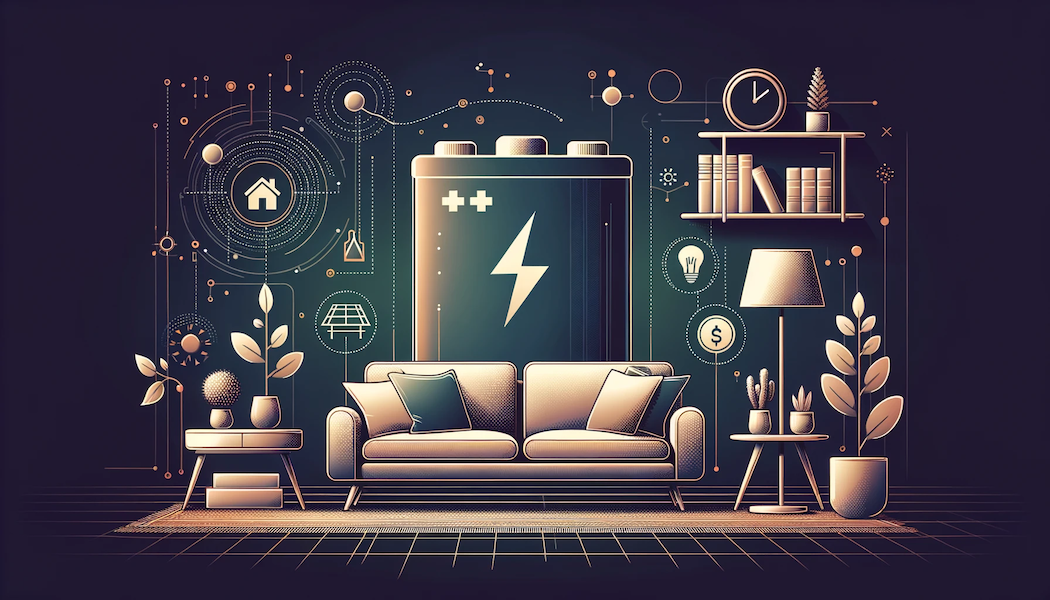 Save With Battery Storage Without Solar Using Octopus Energy
Save With Battery Storage Without Solar Using Octopus Energy
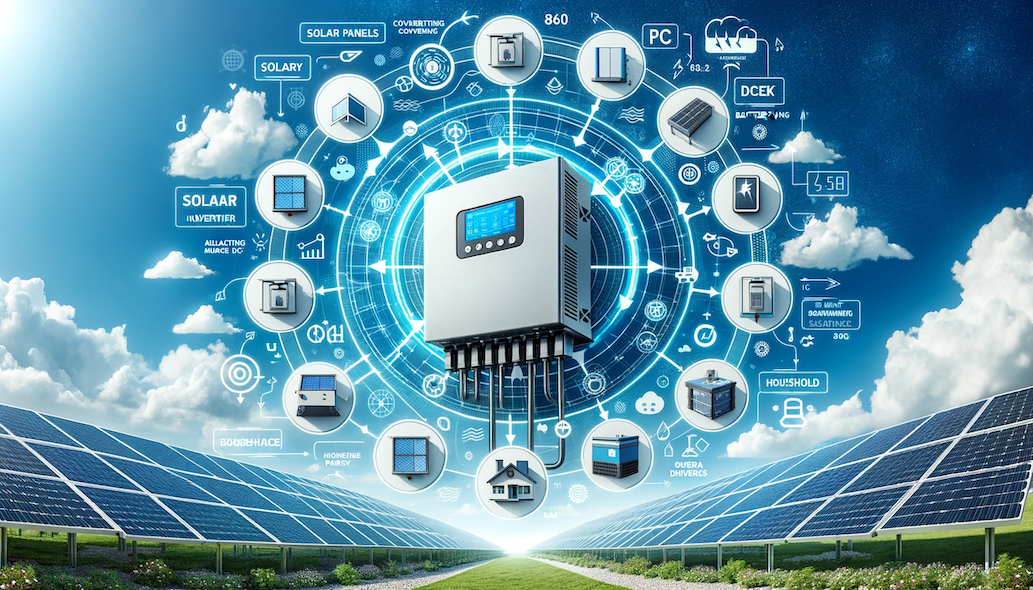 The Critical Role of Solar Inverters in Energy Conversion
The Critical Role of Solar Inverters in Energy Conversion
 Solar String Expansion. Panels Connection Parallel vs Series
Solar String Expansion. Panels Connection Parallel vs Series
 The Joy of Independence and Security From Energy Price Hikes
The Joy of Independence and Security From Energy Price Hikes

